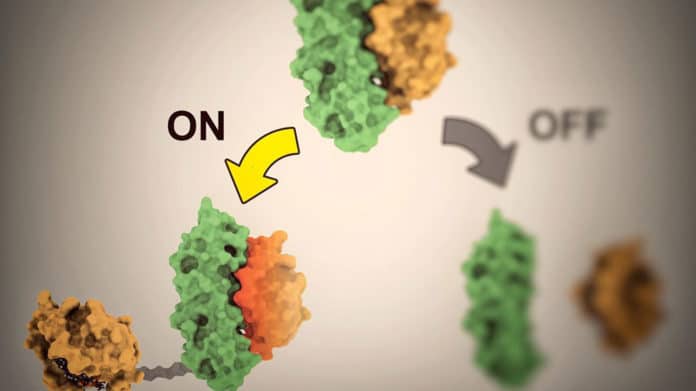Small-molecule responsive protein switches are crucial components to control synthetic cellular activities. However, their repertoire is insufficient for many applications.
In a new study, EPFL scientists developed new controlled proteins by using a computational protein design strategy. The proteins can be used to switch cellular activities on and off like a light bulb.
Sailan Shui, a doctoral assistant at EPFL’s Laboratory of Protein Design and Immunoengineering, said, “The first step was joining the two synthetic proteins together and making sure they can work in tandem. One protein acts like cement, gluing the entire structure together, and the other is a drug-receptor. We also had to find two proteins that form strong, stable bonds so that they remain attached.”
After forming protein pairs, the next step includes finding the third type of molecule that can bind the existing structure and activate it or break it apart and deactivate it.
Scientists designed the new systems to be responsive to a clinically approved drug Venetoclax. The drug Venetoclax is used to treat cancer, but the scientist discovered a further use for it.
Shui said, “I transformed Venetoclax into an on-off switch for the proteins.”
“When the drug comes into contact with the proteins, it can either activate them or separate them and consequently deactivate them. In our method, it’s the Venetoclax molecules that serve as the light switch. They’re the ones that activate or deactivate the proteins. That means she can control when the proteins are activated, and for how long.”
“The hope is that these protein switches can one day be used as intermediaries with cells inside the human body. We could place the protein switches inside specific cells, for example, so that they can be activated when we want.”
Bruno Correia, who heads the EPFL lab where Shui is conducting her research, adds, “That way when we’re ready, we can apply the stimulus and observe the cellular response. This type of protein circuit, where the same compound serves two opposed functions, could be a promising method for monitoring the safety and efficacy of modified cells.”
Journal Reference:
- Shui, S., Gainza, P., Scheller, L. et al. A rational blueprint for designing chemically-controlled protein switches. Nat Commun 12, 5754 (2021). DOI: 10.1038/s41467-021-25735-9
